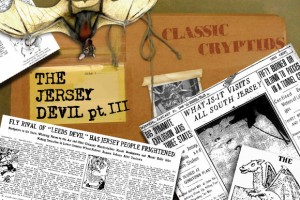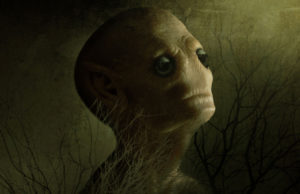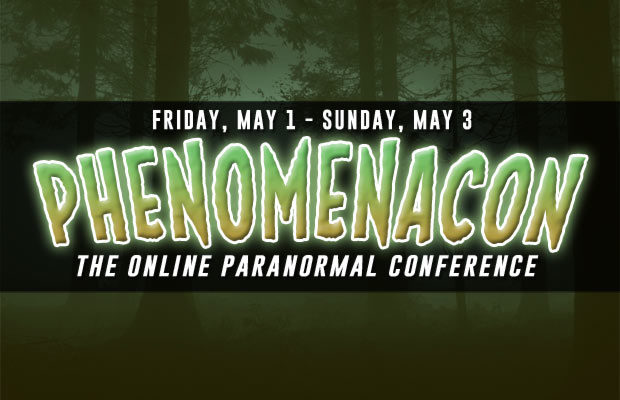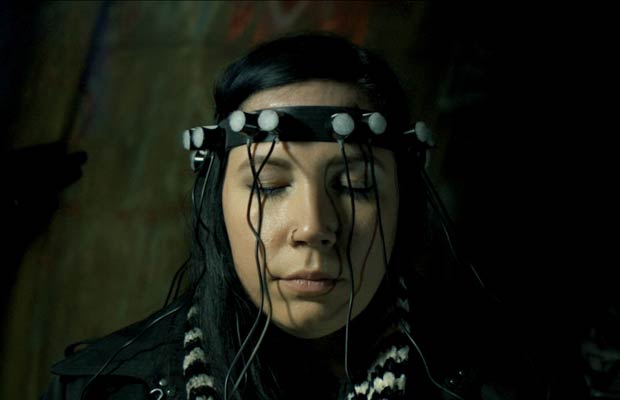Classic Cryptid: The Legend of the Jersey Devil Pt. 3 – The Explanations
 We’ve taken a look at the origin of the Jersey Devil legend in part 1, and explored some of the vast number of sightings people have claimed over the years in part 2. With such a huge number of reported encounters, often by large groups of people rather than individuals, surely there must be something behind it. But what?
We’ve taken a look at the origin of the Jersey Devil legend in part 1, and explored some of the vast number of sightings people have claimed over the years in part 2. With such a huge number of reported encounters, often by large groups of people rather than individuals, surely there must be something behind it. But what?
The most mundane explanations go straight back to the original legend. We know, for example, that in 1735 a woman by the name of Leeds did live in the region in question. She is known to have had a large number of children, perhaps as many as twelve or thirteen – it wasn’t that uncommon at the time. Given her likely age after bearing so many children, it’s possible that she had reached a point close to menopause, where birth defects occur at a greater rate and pregnancies are higher risk.
It’s not unreasonable to hypothesize that last child could have been born deformed – and at the time, deformed children were thought to be the spawn of the devil. It wasn’t uncommon for one to be locked away or hidden in a small room to avoid public scorn or – even worse – the mother being accused of witchcraft. Such a child could have been exposed to the public at some point, and the legend is born.
But as reasonable and likely as that sounds, it can’t explain the years of encounters and sightings that have continued right up to modern day. Needless to say, there have been as many explanations suggested as there have been encounters with the creature.
ADVERTISEMENT
Biologists and Zoologists have suggested that people might have been seeing a species of bird that was once indigenous to the New Jersey area – the Sandhill Crane. It regularly stands 40 − 48 inches tall, has a wingspan of up to seven feet, and its call is a loud (and some say unnatural-sounding) screech. But land development has driven the Sandhill Crane south and out of the region, and the crane is an herbivore whereas the Jersey Devil has been known to attack animals and steal livestock. Not to mention the fact that the rest of the Devil’s description really doesn’t exactly fit…
 Others have suggested that the Jersey Devil might be (or be related to) the Hammer Headed Fruit Bat (Hypsignathus Monstrosus). While there is a striking resemblance to the description of the Jersey Devil, none are known to exist in the wild in America (they’re native to Africa), and the bat in question rarely grows more than eleven inches tall – which is large for a bat, but not near the reported size of the Jersey Devil.
Others have suggested that the Jersey Devil might be (or be related to) the Hammer Headed Fruit Bat (Hypsignathus Monstrosus). While there is a striking resemblance to the description of the Jersey Devil, none are known to exist in the wild in America (they’re native to Africa), and the bat in question rarely grows more than eleven inches tall – which is large for a bat, but not near the reported size of the Jersey Devil.
One particularly wild theory suggests that the Jersey Devil is actually a ‘survival’ – that is, an animal which has survived past the commonly accepted point of extinction, like the coelacanth. In this case, people have suggested that the Jersey Devil might be a group of pterodactyls that have survived throughout the years. Needless to say the physical details are only a rough fit at best, and it seems extremely unlikely that such a survival could have occurred.
But there are even wilder theories. It has been suggested that the Jersey Devil could be the descendant of another creature of legend – the dragon. Both creatures are said to have long necks, wings, and the ability to fly; and in some encounters with the Jersey Devil, it has been said to breathe fire like a dragon. But dragons are, of course, purely mythical. Aren’t they? The Native American tribes of the region did call the area “Popuessing,” which translates to “place of the dragon.”
There are, of course, a large number of supernatural theories about the Jersey Devil. Some people have asked why the Jersey Devil has to be a creature that can be explained by scientific means. Couldn’t it truly be a supernatural entity? After all, it has survived for so long; been shot without taking harm; its tracks have been followed to and through places that no natural creature of its size could have passed through; its tracks have been reported to change size mid-stride, and even to change shape; and it has eluded every attempt at capture.
Needless to say, that’s going to be a hard theory to prove or disprove.
Coming back around from the supernatural, cryptozoologists have put forth two ‘real world’ explanations that many Jersey Devil researchers support.
First, the Jersey Devil could be a hybrid animal of some sort (like a mule, for example). There are two problems with this theory: hybrids tend to be sterile, so reproduction (and thus an ongoing population) is unlikely without intervention; and what creatures could be mated that would produce that unlikely combination of features?
Second, cryptozoologists have suggested – as they have for many unexplained creatures – that it might simply be a previously undiscovered and unidentified form of animal life. New animals are discovered daily somewhere in the world – it’s small-minded to believe that we know every type of creature that inhabits the Earth. Perhaps there is a creature native to the Pine Barrens that lives nowhere else on the planet and has never been captured or killed by humans. Still, with more than seven million people living in the state of New Jersey, it seems unlikely that such a creature could have gone unseen (and uncaptured and unkilled) for this long. Unlikely, but not impossible.
Maybe it’s one or more (or all) of the above. To date, we just don’t know. Obviously, some explanations are more likely than others. Whatever the Jersey Devil is, one thing about it is undeniable: it has made an indelible impact on popular American culture. We’ll look at that in the next part.
MORE GREAT STORIES FROM WEEK IN WEIRD:











You must be logged in to post a comment Login